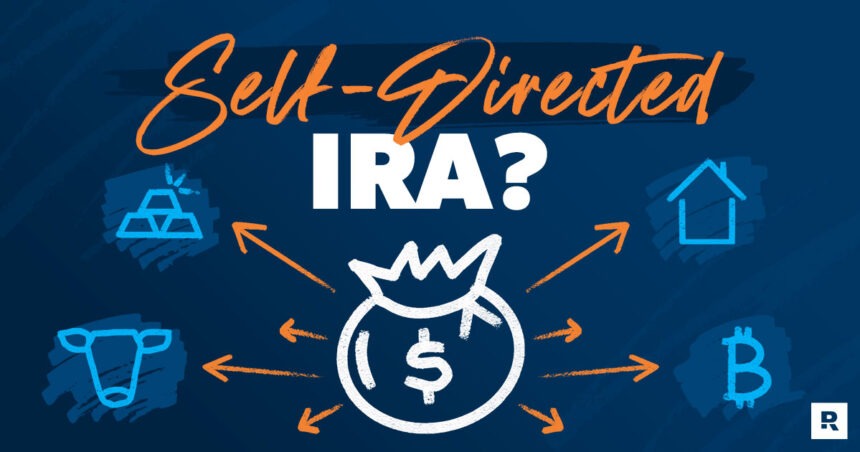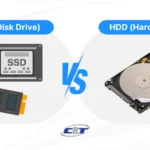Introduction to Self-Directed IRAs
When it comes to retirement planning, many individuals rely on traditional Individual Retirement Accounts (IRAs) or employer-sponsored 401(k) plans. While these investment vehicles offer tax advantages, they often limit investors to pre-selected assets such as stocks, bonds, and mutual funds. However, for those looking to take more control over their retirement savings and explore a broader range of investment opportunities, a Self-Directed IRA might be the ideal solution.
A Self-Directed IRA provides an alternative that gives you the freedom to invest in a variety of asset classes, including real estate, precious metals, private equity, and even cryptocurrency. But before you dive into the world of Self-Directed IRAs, it’s essential to understand how they work, the benefits and risks, and how they can help you achieve your retirement goals.
What is a Self-Directed IRA?
A Self-Directed IRA is a retirement account that allows investors to have greater control over their investment choices. Unlike standard IRAs, which limit you to traditional investments like stocks and bonds, a Self-Directed IRA opens the door to alternative investments. This type of IRA is held by a custodian or trustee who ensures the account complies with IRS regulations, but the investor has full control over the investment decisions.
Self-Directed IRAs are governed by the same tax advantages as traditional IRAs. This means that contributions may be tax-deductible (for a traditional Self-Directed IRA), and any investment gains within the account grow tax-deferred until withdrawn at retirement. Additionally, Self-Directed IRAs can also be structured as Roth IRAs, allowing for tax-free growth and withdrawals.
Types of Self-Directed IRAs
There are several types of Self-Directed IRAs that cater to different investment needs:
1. Traditional Self-Directed IRA
A Traditional Self-Directed IRA allows you to contribute pre-tax income, and your contributions grow tax-deferred until withdrawal. This means that you won’t pay taxes on your investment gains until you retire and start taking distributions.
2. Roth Self-Directed IRA
With a Roth Self-Directed IRA, contributions are made with after-tax dollars, meaning you won’t receive a tax deduction upfront. However, your investment gains grow tax-free, and qualified withdrawals in retirement are also tax-free.
3. SEP Self-Directed IRA
The Simplified Employee Pension (SEP) Self-Directed IRA is a popular choice for self-employed individuals and small business owners. It allows for higher contribution limits than a traditional IRA, which can help accelerate retirement savings.
4. SIMPLE Self-Directed IRA
The SIMPLE Self-Directed IRA is another option for small business owners and employees. While it has lower contribution limits than a SEP IRA, it still allows for tax-deferred growth and is easy to set up and manage.
How Do Self-Directed IRAs Work?
The primary difference between a standard IRA and a Self-Directed IRA lies in the control the investor has over their investment choices. Here’s a breakdown of how Self-Directed IRAs work:
Custodian or Trustee
To establish a Self-Directed IRA, you must work with a custodian or trustee who is responsible for maintaining the account, ensuring IRS compliance, and facilitating transactions. The custodian doesn’t make investment decisions for you, but they do help ensure that the investments meet the IRS’s rules.
Contribution Limits
Like other IRAs, Self-Directed IRAs have annual contribution limits. For 2025, the contribution limit for individuals under 50 is $6,000, while individuals 50 and older can contribute $7,000, which includes a catch-up contribution. These limits are subject to change based on IRS regulations.
Investment Flexibility
Unlike traditional IRAs, a Self-Directed IRA allows you to invest in a wide array of assets, including but not limited to:
- Real estate (residential or commercial properties)
- Precious metals (gold, silver, platinum)
- Private equity
- Cryptocurrency (Bitcoin, Ethereum, etc.)
- Tax liens
- Private loans
- Limited partnerships and LLCs
Tax Benefits
Self-Directed IRAs maintain the same tax advantages as other IRAs. In a traditional Self-Directed IRA, your contributions are tax-deductible, and your investments grow tax-deferred until retirement. In a Roth Self-Directed IRA, your investments grow tax-free, and qualified withdrawals are also tax-free.
The Benefits of Self-Directed IRAs
The flexibility and control that come with a Self-Directed IRA can provide significant benefits for investors looking to diversify their portfolios and grow their wealth. Some of the key benefits include:
1. Investment Control
With a Self-Directed IRA, you have complete control over your investment choices. Whether you’re interested in real estate, precious metals, or startup companies, you can build a portfolio that aligns with your unique investment strategy.
2. Diversification
One of the primary advantages of a Self-Directed IRA is the ability to diversify your investments across asset classes that aren’t available in traditional IRAs. This diversification can help reduce risk and increase the potential for higher returns over time.
3. Potential for Higher Returns
Investing in alternative assets, such as real estate or private equity, can potentially offer higher returns compared to traditional investments like stocks and bonds. A Self-Directed IRA allows you to tap into these high-return opportunities.
4. Tax Advantages
As with traditional IRAs, Self-Directed IRAs provide tax-deferred growth on contributions, and in the case of a Roth Self-Directed IRA, tax-free growth. This can significantly enhance your retirement savings over the long term.
5. More Control Over Fees
Traditional IRAs often come with high management fees, especially if you are investing through a financial advisor or a brokerage. With a Self-Directed IRA, you can potentially reduce these fees by choosing where and how to invest.
The Risks of Self-Directed IRAs
While Self-Directed IRAs offer significant benefits, they are not without their risks. Investors should be aware of these potential risks before diving into alternative investments.
1. Complex Regulations
The IRS has strict rules regarding what investments are allowed in Self-Directed IRAs. If you violate these rules, you could face penalties, taxes, or even the disqualification of the entire IRA. It’s crucial to work with a knowledgeable custodian and understand the rules.
2. Lack of Liquidity
Many alternative investments, such as real estate or private equity, are illiquid. This means that if you need access to your funds quickly, you may face difficulties in selling the assets. Self-Directed IRAs may not be suitable for individuals who anticipate needing immediate access to their funds.
3. Management Complexity
Managing a Self-Directed IRA requires time and effort. You must do thorough research, manage investments, and ensure compliance with IRS regulations. If you are not prepared to manage the complexity of these investments, it may not be the right choice for you.
4. Custodian Fees
While a Self-Directed IRA can offer lower fees compared to traditional IRAs, you will still need to pay fees to the custodian for account management and transaction facilitation. These fees can add up, so it’s important to factor them into your investment strategy.
How to Set Up a Self-Directed IRA
Setting up a Self-Directed IRA is a straightforward process, but it’s important to follow the steps carefully to ensure compliance with IRS rules. Here’s how to get started:
Step 1: Choose a Custodian
The first step in setting up a Self-Directed IRA is to choose a custodian. There are many custodians that specialize in Self-Directed IRAs, so it’s important to research and choose one that aligns with your investment goals and asset classes.
Step 2: Fund Your Account
Once you’ve selected a custodian, you can fund your Self-Directed IRA by transferring assets from another retirement account, such as a traditional IRA or 401(k), or by making a direct contribution.
Step 3: Select Your Investments
After funding your account, you can begin selecting investments for your Self-Directed IRA. Remember that you have the flexibility to invest in alternative assets, but you must ensure that your investments comply with IRS regulations.
Step 4: Monitor Your Investments
Once you’ve made your investments, it’s important to monitor them regularly to ensure they’re performing well and meeting your retirement goals. Keep in mind that Self-Directed IRAs require active management and oversight.
Conclusion
A Self-Directed IRA is a powerful tool for investors looking to take control of their retirement savings and diversify their portfolios. With the ability to invest in a wide variety of assets, including real estate, precious metals, and even cryptocurrency, Self-Directed IRAs provide unparalleled flexibility and control. However, with this power comes responsibility. It’s crucial to understand the rules, risks, and regulations associated with these accounts to ensure you’re making informed investment decisions.
If you’re ready to explore the potential of Self-Directed IRAs, make sure to work with a reputable custodian and do your research. With the right strategy, a Self-Directed IRA can help you achieve financial freedom and build the retirement of your dreams.









